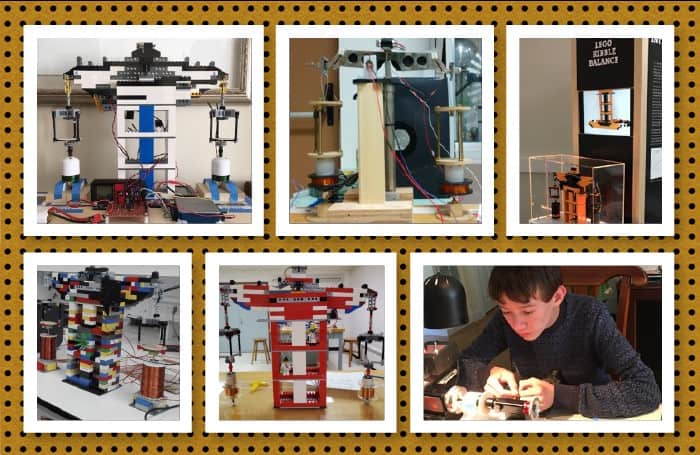
We do love a good LEGO story here at Physics World. Indeed, this is the 55th article on the plastic blocks that we have published on the website. In this instalment we travel to Gaithersburg, Maryland where in 2013 Leon Chao and colleagues at the National Institute of Standards and Technology (NIST) were asked to make a miniature LEGO version of the 2.5 metre tall Kibble balance that they were building at the time.
Also known as a Watt balance, a Kibble balance provides a way of defining the kilogram in terms of Planck’s constant. It is an essential piece of kit in national metrology labs like NIST because this is how the kilogram has been defined since 2019 by the International Committee for Weights and Measures.
Chao and colleagues followed through on the request and even described their LEGO version in the American Journal of Physics. Much to the team’s surprise and delight, people from around the world built their own versions and sent photographs to NIST (see figure).
Design journey
In NIST’s Taking Measure blog, Chao describes what happened next. Inspired by their small-scale LEGO version, the team embarked on a design journey to make a table-top Kibble balance that could be used in labs and by industry. The first incarnation was called KIBB-g1 and could determine gram-level masses to six-digit accuracy. Chao and colleagues are now working with the US Army to develop KIBB-g2 and also with the Air Force to develop a torque standard based on a Kibble balance.
Shared laughter
I’m guessing that robots are a popular thing for people to make with LEGO, but how many of those robots have a sense of humour? Very few I am guessing, but that could soon change thanks to researchers at Kyoto University in Japan, who have used artificial intelligence to teach a robot to laugh and enjoy the funnier side of life.
The team focussed on the phenomenon of “shared laughter”, whereby an individual in a group laughs and this causes others in the group to into laugh as well. It turns out that it isn’t as simple as simply having the robot laugh when it hears a human laugh. Analysis of speed dating conversations revealed that most laughs don’t elicit a shared laugh – and working out why is a tricky business given the nuances of human behaviour.
Koji Inoue and colleagues in Kyoto carefully characterized the laughter responses in their data and used their results along with artificial intelligence to train a robot called Erica in the art of shared laughter. They tested the robot’s laughing ability by having people listen to its responses during a brief dialogue with a human.
You can read more about Kyoto’s laughing robot in Frontiers in Robotics and AI.
